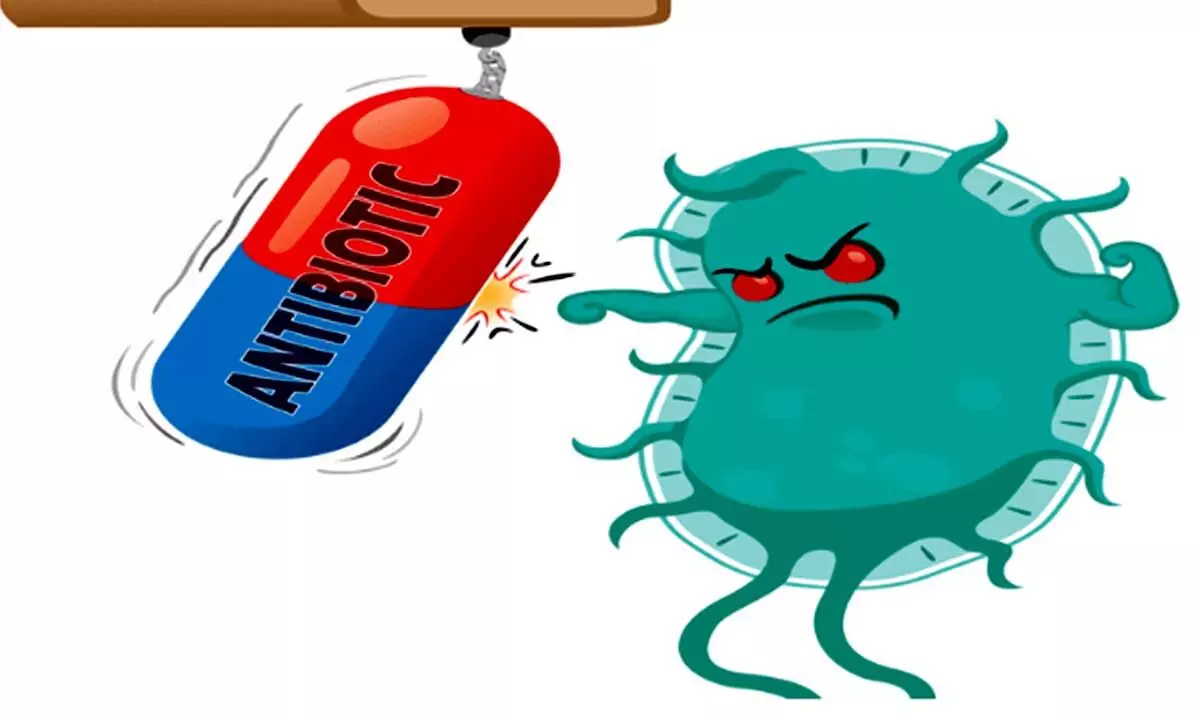More measures needed to combat the development challenge posed by AMR
To tackle the problem of Anti-microbial Resistance (AMR), all govts and partners across the world needs to collaborate as one family, says Union Minister Dr Bharati Pravin Pawar
image for illustrative purpose

India is among the nations with the highest burden of bacterial infections. An estimated 410,000 children aged five years or less die from pneumonia in India annually; with pneumonia accounting for almost 25 per cent of all child deaths. The crude mortality from infectious diseases in India today is 417 per 100,000 persons. Consequently, the impact of AMR is likely to be higher in the Indian setting
Recently, Union Minister of State for Health, Dr Bharati Pravin Pawar has urged all governments and partners across the world to collaborate at the international, national and sub-national levels to tackle the development challenge posed by Antimicrobial Resistance (AMR) as one family. Dr Pawar, while delivering India's national statement on combating AMR at the Third Global High-Level Ministerial Conference on AMR at Muscat, Oman, said that the government of India has identified AMR as a key priority in its National Health Policy, 2017 and has taken a series of initiatives which strive to build systems to counter AMR holistically.
The Minister added that India's example of prioritising the development and implementation of State Action Plans for Containment of Antimicrobial Resistance to ensure effective containment of AMR across sectors at this cutting-edge level is a best practice that can be further discussed and emulated by other countries. In the conference, Dr Pawar elaborated that India's National Action Plan for containment of AMR (NAP-AMR) was officially released on 19th April 2017. The Delhi Declaration on AMR, which is an inter-ministerial consensus, was signed at the launch of NAP-AMR, by the ministers of the concerned ministries pledging their whole-hearted support in AMR containment. The Minister also emphasized that the NAP-AMR focuses on an integrated One Health approach and involves coordination among various sectors at the state, national and international level.
Of course, AMR has been a serious and growing public health threat globally that threatens the effective prevention and treatment of an increasing range of infections. It has been identified as a global health threat with serious health, political and economic implications. In India too, AMR is a major public health concern. The emergence of resistance is not only limited to the older and more frequently used classes of drugs but there has also been a rapid increase in resistance to the newer and more expensive drugs like carbapenems. Available data indicates to rising rates of AMR across multiple pathogens of clinical importance, at the national scale. Sadly, India is among the nations with the highest burden of bacterial infections. An estimated 410,000 children aged five years or less die from pneumonia in India annually; with pneumonia accounting for almost 25 per cent of all child deaths. The crude mortality from infectious diseases in India today is 417 per 100,000 persons. Consequently, the impact of AMR is likely to be higher in the Indian setting.
It is not that the Indian government is not aware about the challenges posed by AMR in the country. That it is seized of the seriousness of the issue is evident from the fact that the Union Health Ministry, way back in 2016, notified three governance mechanisms to address this challenge. These include the Inter-sectoral Coordination Committee, Technical Advisory Group and Core Working Group on AMR for technical coordination and oversight. The Core Working Group has been activated and has drafted the National Action Plan on Antimicrobial Resistance (NAP-AMR). Besides, the Ministry has also identified AMR as one of the top 10 priorities for its collaborative work with the WHO for 2018–2019. The NAP-AMR serves to leverage the strengths of various institutions such as National Center for Disease Control, Indian Council of Medical Research to coordinate AMR surveillance lab networks, monitor antimicrobial consumption in health facilities, strengthen infection prevention and control, and promote antimicrobial stewardship to optimize use of antimicrobials. Food safety is monitored by The Food Safety Standards Authority of India. Similarly, Indian Network for Fisheries and Animal Antimicrobial Resistance monitors AMR in the animal sector.
Recently, the national medical education regulatory in the country, the National Medical Commission (NMC), has taken a decision to frame common module on antimicrobial resistance (AMR) containment which will improve awareness and understanding of AMR among undergraduate, postgraduate medical students, and teaching professionals of medical colleges. The Commission's action in this regard is part of its effort to operationalize NAP-AMR which is aimed to curtail spread of AMR in the country. Obviously, the issue is far from over. Regulatory intervention is urgently required for a complete ban of over-the-counter (OTC) sale of antimicrobials which is a pathway for the rapid emergence of the antimicrobial resistance.
OTC sale of antibiotics which kill microorganisms or reduce the presence of microbes leads to their misuse or overuse. Sale of antibiotics without a valid prescription from a qualified doctor has to be prohibited with immediate effect. In fact, the National Health Policy 2017, issued by the Health Ministry, had highlighted the problem of antimicrobial resistance and called for a rapid standardization of guidelines regarding antibiotic use, limiting the use of antibiotics as OTC medications, banning or restricting the use of antibiotics as growth promoters in animal livestock, and pharmacovigilance including prescription audits inclusive of antibiotic usage - in the hospital and community. The government has to take more such measures to combat the challenge of AMR.
(The author is a freelance journalist with varied experience in different fields)

